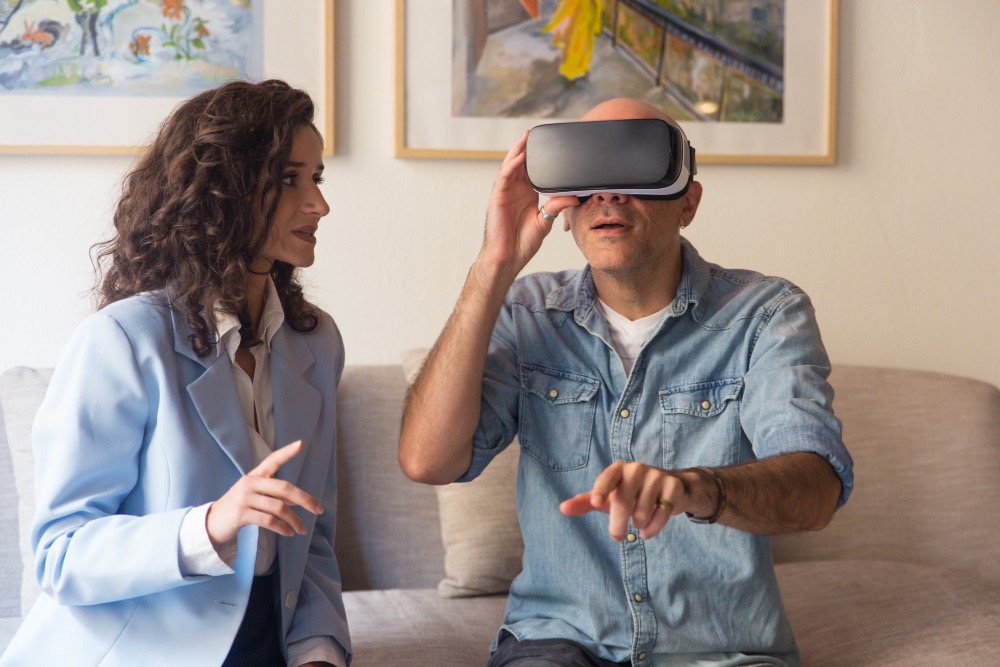Bessel van der Kolk’s book The Body Keeps The Score talks about a type of therapy called Pesso Boyden Psychomotor Therapy (PBSP). PBSP gives people a way to project their inner world into three-dimensional space, using objects or people to stand in for family members, friends, or even ideal figures who should have been there but weren’t.
By moving these stand-ins around, people can literally reshape how they relate to their past. It’s had real effects on how safe, seen, and supported people feel in the present. Here’s an example:
The problem is, PBSP is hard to access. Most people haven’t even heard of it. Like many forms of therapy, it remains locked behind barriers of geography, price, and awareness.
Access
Therapy in general is expensive. In the US, the average cost of a session ranges from 100-200 USD, often not covered by insurance. Things are a bit better in the UK, as you can get treatment under the NHS. Travel adds more expense and inconvenience.
And then there’s the knowledge gap: most people don’t know therapies like PBSP even exist. That means they can’t ask for them, even if such therapy might be the key to working through deep issues. There aren’t that many practitioners, and sessions usually involve travel and group participation.
According to the World Health Organization, nearly 1 in 7 people globally live with a mental disorder. Yet only 29% of people with psychosis and about one third of people with depression receive mental health care. If we want to change that, we need more than traditional in-person therapy models. We need ways to scale access in a high-bandwidth way that goes beyond phone calls.
Immersive technologies
Imagine putting on Augmented Reality glasses in your living room. Suddenly, you can project an avatar to represent your father, another for your mother, or even summon a digital figure to play the role of an ideal protector. You can move these objects around in real time, guided remotely by a therapist’s voice in your ear.
In Virtual Reality (VR), the possibilities expand even more. You could enter a fully immersive space designed to represent your childhood home. You could resize objects, replay key moments, or bring in avatars that embody support and care. Therapists could run group sessions remotely, with participants from across the world filling in as role-players through avatars.
Immersive technologies like AR and VR lower costs by removing the need for large in-person setups. They eliminate travel and open up the therapy to those who might otherwise never get it. Just as telemedicine made regular healthcare more accessible, virtual therapy could do the same for mental health.
What makes AR and VR powerful
One advantage is customization. Take PBSP, for example. In a digital space, you can pause, replay, and experiment with different setups until something clicks. Sessions could be recorded so you can reflect later, something that rarely happens with live therapy.
Privacy also increases. You don’t have to share your story in front of strangers role-playing your family; instead, you can use avatars or objects that feel safer.
There’s also the potential for data. Imagine being able to track over time how your inner world changes. A therapist could visualize progress, showing how objects you once placed far away have moved closer, or how threatening figures have shrunk. For someone who struggles to see growth in themselves, that kind of visualization can be motivating.
Where virtual reality falls short
Therapies like PBSP depend on attunement—the subtle dance of posture, tone, and presence between people. In person, a contact person might sit beside you, offering comfort by simply being there. Online, even with VR, that embodied resonance is harder to reproduce. Body language is flatter, and you miss micro-movements.
AR and VR headsets also aren’t cheap, and they require stable internet. Not every household can afford or operate this technology, especially in the Global South. Then there’s the question of safety: reliving trauma in isolation, even with a therapist on a screen, risks overwhelm. We’d need strong safeguards in any virtual therapy system.
The middle ground
The future might be hybrid. Some people could begin with virtual therapy, getting comfortable with the process, and then transition to in-person when possible. Others might stay fully digital but with stronger support systems, like live co-regulation tools that help track breathing or heart rate between therapist and client. We might even see AI avatars trained to act as contact persons, offering basic comfort cues when a human isn’t available.
These aren’t replacements for human presence, but they widen the doorway. They make it possible for someone who would otherwise never access therapy like PBSP to at least try it, taste its benefits, and gain some relief.
Final thoughts
We are at a point where mental health needs are rising while access remains unequal. Immersive technology won’t solve everything, but it can help close the gap. If we build it thoughtfully, virtual psychotherapy could become an affordable and accessible option for millions who currently have no access at all.


